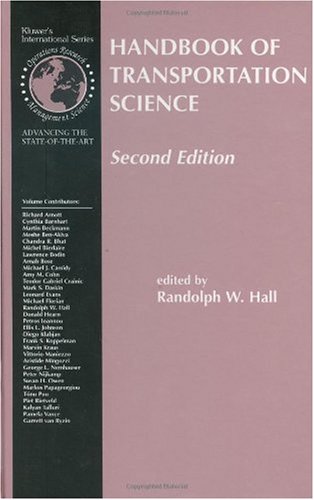

Most ebook files are in PDF format, so you can easily read them using various software such as Foxit Reader or directly on the Google Chrome browser.
Some ebook files are released by publishers in other formats such as .awz, .mobi, .epub, .fb2, etc. You may need to install specific software to read these formats on mobile/PC, such as Calibre.
Please read the tutorial at this link: https://ebookbell.com/faq
We offer FREE conversion to the popular formats you request; however, this may take some time. Therefore, right after payment, please email us, and we will try to provide the service as quickly as possible.
For some exceptional file formats or broken links (if any), please refrain from opening any disputes. Instead, email us first, and we will try to assist within a maximum of 6 hours.
EbookBell Team

4.7
76 reviewsThe eighteen chapters in the Second Edition of the Handbook of Transportation Science are written by the leading researchers in Transportation Science as a continual effort to explore the scientific nature and state-of-the-art of the field. As such, it is directed to all the research and practitioner domains of transportation. It has been expanded from the first edition through the addition of four chapters. Chapter 15 extends the networks section of the book by addressing supply chains, distribution networks and logistics. While the emphasis is on freight transportation, the principles for network design extend to other applications, such as public economics. Chapter 16 through 18 fall in a new section on transportation economics. Chapter 16 addresses revenue management, a relatively recent topic in transportation, which has had substantial impact on the airline industry in particular. Chapter 17 presents spatial interaction models, which provides a mechanism for analyzing patterns of development. Chapter 18 provides the principles of transportation economics, with emphasis on pricing and public policy. In addition to the new chapters, the original chapters have been updated and revised.